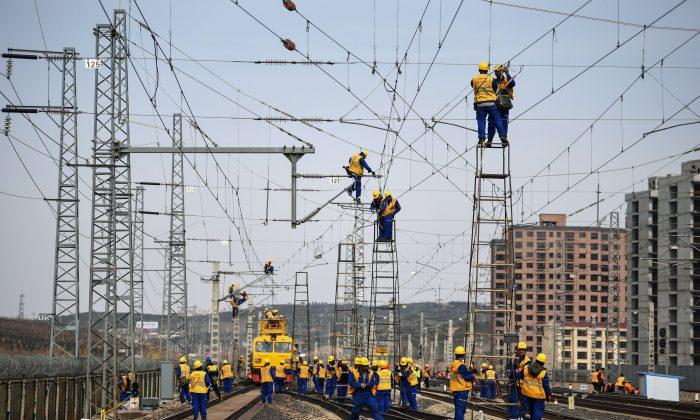The rebound is broad-based, with smaller companies borrowing more than larger companies and private firms borrowing more than state-owned enterprises (SOEs). Investment climbed by double digits in a strong hint that Beijing is dialling up plays from an old playbook that it’s trying to abandon.
The Shanghai Composite has surged after a disastrous 2018. It’s up 21 percent in 2019, while the yuan has moved away from that 7-handle—up 2.5 percent year-to-date.
But CBB has compelling reasons to doubt the rally’s staying power as the communist regime departs from its push for reducing dependence on credit. For the first time in a year, credit costs at banks picked up in the first quarter. In fact, average borrowing costs have spiked—to the highest since mid-2017 and dramatically higher than at any other time in the last seven years.
Credit costs at banks average 6.90 percent, and in the bond market 9.91 percent.
Either interest costs have to fall or borrowing will, says CBB.
And worse still, the use of shadow banking rose and experienced the biggest increase in credit costs, reaching a 4-year high of 11.42 percent, according to CBB data.
“Beijing has begun to unshackle shadow finance, with further consequences for bad debt, financial transparency, and potentially even political stability,” Qazi said.
“With deleveraging dead and sectoral rebalancing going nowhere, Beijing is simply focused on the short term, avoiding a politically worrisome slowdown,” he added.
And this has been propping up the house of cards for an extended period. But it can’t go on ad infinitum and has consequences for return on capital. It will lead to a harsher slowdown in the future. Thus it had been Beijing’s plan to clean up its act and go on a deleveraging campaign.
The ‘Japanification’ of China
Japan’s economy has been stuck in quicksand for decades with rock-bottom interest rates, minimal growth, and a debt-to-GDP ratio that is easily the highest in the G7.Many doubt that China is growing at the roughly 6 percent rate the communist regime says it is. Inflation is muted and the rally in property was heavily driven by SOEs.
“2018 also started fairly well but ended with little acceptance of Beijing’s ceaseless claims of stable growth,” according to CBB’s report.
As China opens the credit spigots, companies that should be bankrupt roll over their debt and “live” on, and the drain on future growth will become increasingly burdensome, says Qazi.






Friends Read Free